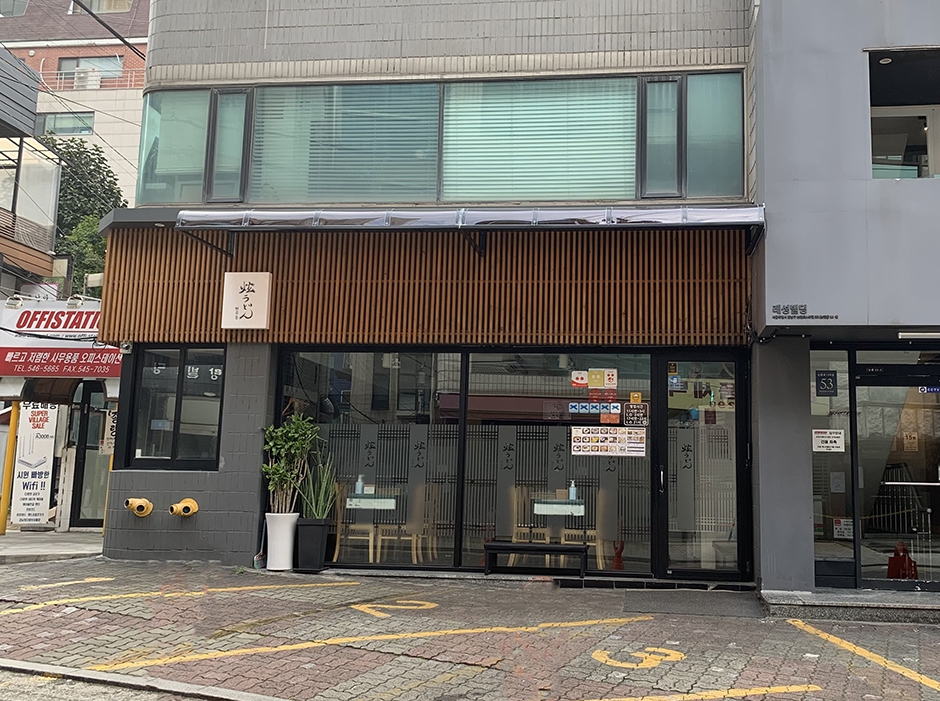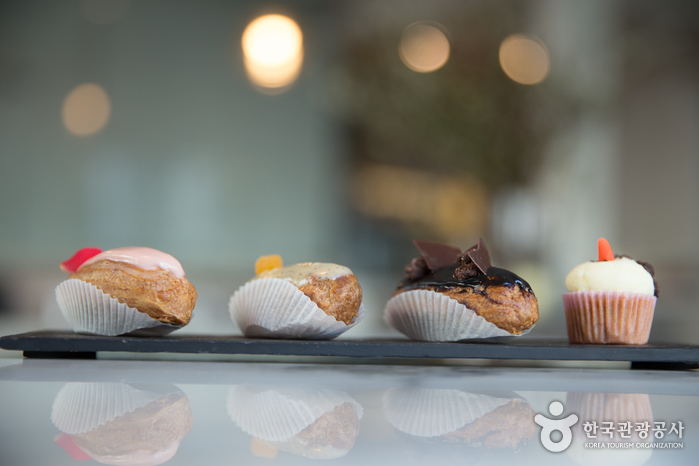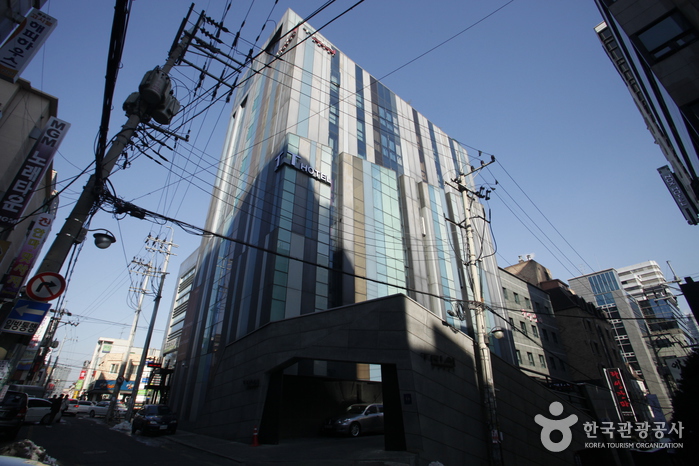Hyunudon (현우동)
7.0Km 2024-02-22
53 Nonhyeon-ro 149-gil, Gangnam-gu, Seoul
Hyunudon is a specialty udon restaurant and noodle factory near Sinsa Station, led by Chef Park Sanghyun, renowned for his mastery of udon. The restaurant gained fame for its deep-fried dish and cold udon with bonito soy sauce, showcased as a delicious dish on various TV programs. Their main offerings include mentaiko ankake tamagotoji udon (pollack roe and egg udon) and tempura bukkake udon (cold udon with bonito soy sauce). Additionally, popular choices include curry deopbap (curry with rice), ebiten mochi bukkake udon (deep-fried shrimp, rice cake and cold udon with bonito soy sauce), toriten bukkake udon (deep-fried chicken drumsticks and cold udon with bonito soy sauce), and tenzaru udon (tempura and zaru udon).
SONA (소나)
7.0Km 2024-03-18
SONA 2F, 40, Gangnam-daero 162-gil, Gangnam-gu, Seoul
SONA is a cozy café serving luxurious desserts. The indoor space is wide and comfortable, with plenty of seats for visitors. The café is famous for its vacherin and main desserts, and cake desserts like petit four. The signature menu of the café, Champagne Sugar Ball, skillfully weaves together fresh flowers and other ingredients into a beautiful whole.
The Plus Plastic Surgery [Tax Refund Shop] (더플러스 성형외과)
7.0Km 2024-04-19
9, Garosu-gil, Gangnam-gu, Seoul
-
River View [Korea Quality] (리버뷰(River View)[한국관광 품질인증])
7.0Km 2024-07-25
191, Dokseodang-ro, Seongdong-gu, Seoul
+82-10-3539-1689
Riverview is a foreigner-only homestay apartment on Dokseokdang-ro in Seongdong-gu, Seoul. Public transportation links are good so guests can travel round the city with ease. Accommodation is in personal bedrooms, with a shared living room and kitchen. A washing machine can be used free of charge, and breakfast is provided. Situated on the 12th floor, the apartment has great views of the Hangang River and the surrounding mountains. The Hangang Cycle Path runs close by, and riding the path on a rented bike is highly recommended.
Cha Gangnam Medical Center, Cha University (차의과학대학교 강남차병원)
7.0Km 2025-07-29
(Yeoksam-dong), 566 Nonhyeon-ro, Gangnam-gu, Seoul
CHA Gangnam Medical Center was founded in 1960 with the opening of CHA Obstetrics & Gynecology Clinic by Honorary Head Director Gyeong-seop Cha. In 1984, it expanded into a general hospital with 200 beds in Gangnam District.
As a specialized hospital for obstetrics and gynecology designated by the Ministry of Health and Welfare, CHA Gangnam Medical Center provides top-tier healthcare services through 14 specialized departments, including obstetrics and gynecology, and 39 specialized centers and clinics, such as Fertility Center, IVF Center, and the High-Risk Pregnancy Clinic. The hospital offers precise diagnoses and treatments, specializing in uterine fibroids and gynecological cancers, and utilizes cutting-edge minimally invasive surgical techniques to ensure minimal scarring and rapid recovery. It has also achieved the highest number of robotic surgeries in obstetrics and gynecology in the country, with over 5,000 procedures performed.
Since its establishment in 1984, CHA Gangnam Medical Center's Fertility Center has pioneered numerous groundbreaking achievements, including the birth of the first test-tube baby at a private hospital in Korea, the country's first successful intracytoplasmic sperm injection (ICSI), the world's first birth through in vitro maturation of an immature oocytes, and the first baby born from vitrified (frozen) eggs. These accomplishments have earned the hospital global recognition for its research and development.
Nice Weather Market [Tax Refund Shop] (나이스웨더마켓)
7.0Km 2024-06-26
35, Gangnam-daero 162-gil, Gangnam-gu, Seoul
-
Geumdwaeji Sikdang (금돼지식당)
7.0Km 2024-10-17
149 Dasan-ro, Jung-gu, Seoul
Geumdwaeji Sikdang is renowned as one of the top three pork restaurants in Seoul, specializing in pork dishes. Its signature menu item is the nunkkon moksal (grilled pork shoulder), known for its marbled appearance resembling snowflakes. Bonsamgyeop (grilled bone-in pork belly) and deungmoksal (short loin and pork shoulder) are also popular choices. They offer fragrant basil wraps as a side dish, which perfectly complements the slightly grilled basil with the juicy and flavorful meat, creating a harmonious taste sensation that is considered a delicacy at this establishment.
Tria Tourist Hotel (트리아 관광호텔)
7.0Km 2021-07-22
16, Teheran-ro 33-gil, Gangnam-gu, Seoul
+82-2-553-2471
Tria Hotel is conveniently located in Yeosam-dong, the center of business and transportation in Seoul. The hotel caters towards guests wishing to enjoy a high-end lifestyle. The hotel interior follows the trends of Europe, featuring pop art and other interesting accents similar to those found in boutique hotels.
Lotte Himart - Songpa Lotte Mart Branch [Tax Refund Shop] (롯데하이마트 송파롯데마트점)
7.0Km 2024-04-18
80, Jungdae-ro, Songpa-gu, Seoul
-
Lotte Mart - Songpa Branch [Tax Refund Shop] (롯데마트 송파점)
7.0Km 2024-04-22
80, Jungdae-ro, Songpa-gu, Seoul
-


![The Plus Plastic Surgery [Tax Refund Shop] (더플러스 성형외과)](http://tong.visitkorea.or.kr/cms/resource/41/2879741_image2_1.jpg)
![River View [Korea Quality] (리버뷰(River View)[한국관광 품질인증])](http://tong.visitkorea.or.kr/cms/resource/74/2592474_image2_1.jpg)

![Nice Weather Market [Tax Refund Shop] (나이스웨더마켓)](http://tong.visitkorea.or.kr/cms/resource/63/3313563_image2_1.jpg)

![Lotte Himart - Songpa Lotte Mart Branch [Tax Refund Shop] (롯데하이마트 송파롯데마트점)](http://tong.visitkorea.or.kr/cms/resource/80/2879480_image2_1.jpg)
![Lotte Mart - Songpa Branch [Tax Refund Shop] (롯데마트 송파점)](http://tong.visitkorea.or.kr/cms/resource/79/2879479_image2_1.jpg)
 English
English
 한국어
한국어 日本語
日本語 中文(简体)
中文(简体) Deutsch
Deutsch Français
Français Español
Español Русский
Русский